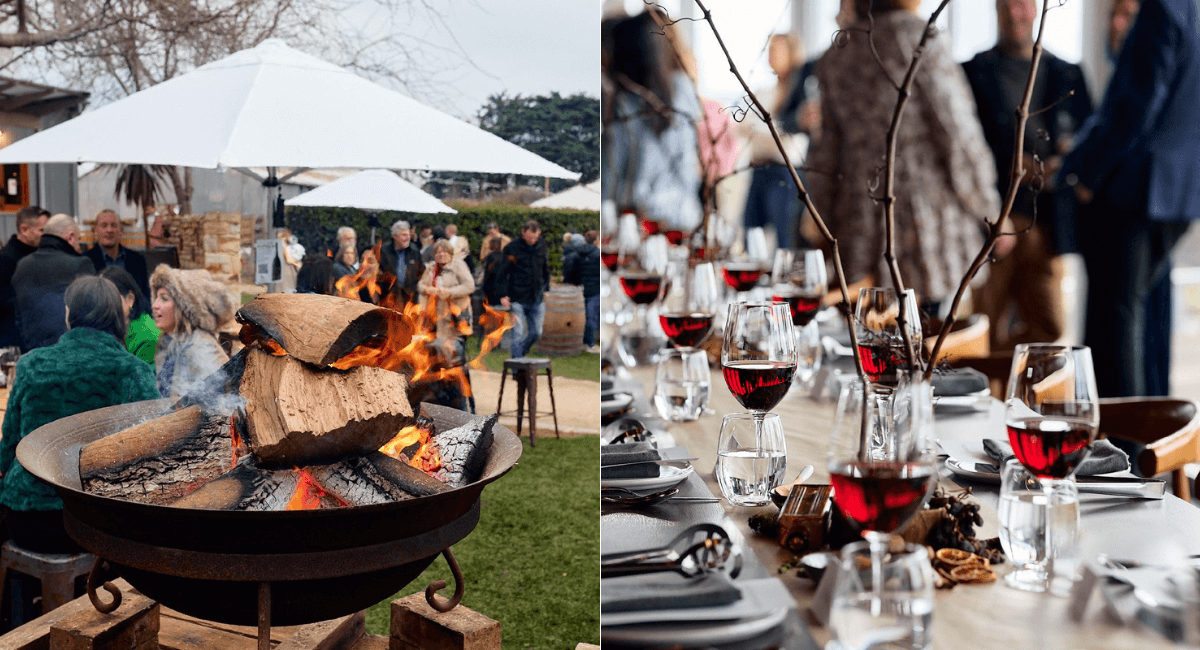Sommeliers Choice Awards 2025 Winners
Adelaide Hills: Perfecting Cool-Climate Wines for the Global Stage
Alex Trescowthick on crafting cool-climate wines, mastering exports, and elevating Adelaide Hills.

Adelaide Hills, nestled just minutes from South Australia's bustling capital, stands as a fine example of cool-climate winemaking. Known for its sweeping vistas and meticulously crafted wines, the region has gained global attention for its signature Chardonnay, Pinot Noir, and vibrant Sauvignon Blanc. Beneath the picturesque vineyards lies a community committed to innovation, sustainability, and collaboration. At the helm of this evolution is Alex Trescowthick, Chair of the Adelaide Hills Wine Regional Association. In this interview, Trescowthick shares insights on the region’s growth strategies, the challenges posed by climate shifts, and how Adelaide Hills is positioning itself on the world stage.
Alex, as Chair of the Adelaide Hills Wine Regional Association, how do you see the region evolving in the next few years, and what key initiatives are driving this evolution?
Our objectives as a regional body are to support our members to produce the best possible cool climate wines and to build awareness of the region and the wines that we do exceptionally well. These include Chardonnay, Sauvignon Blanc, Pinot Noir, Syrah, and Sparkling wine.
One key initiative is to continue to focus on training and developing the people in our region. By upskilling the people, we upskill the region to produce even better-quality wines. This includes subsidised courses such as WSET and wine service skills for cellar door staff, Advanced Wine Assessment for winemakers, Advanced Viticulture Course, and Simonit & Sirch pruning training for growers.
We also support initiatives that involve collaboration between our members, because only together can we pursue our vision to be a world-class cool climate wine region.

Image: National Wine Education & Training Centre
What are the key focus areas of the Adelaide Hills Wine Region's export program? Are there any emerging international markets that excite you for future expansion?
Over the long term, the United Kingdom has been the most important export market destination by value for Adelaide Hills’ wines. The USA is also significant but relatively static.
We are excited about the reopening of China to Australian wines, which prior to 2022 rivalled the UK as the most important market for wines from Adelaide Hills. Other markets in Southeast Asia that are showing promise are Hong Kong, Japan, and Singapore, and pockets in Europe including Denmark and Netherlands, among others.
The Adelaide Hills Wine Region does not have an export program aimed at specific markets. We take opportunities offered through Wine Australia where we see benefits for our region’s members, to raise awareness for the high quality of Adelaide Hills wines, through activities such as premium Chardonnay masterclasses at events such as Prowein.
Adelaide Hills has a strong digital presence and a vibrant wine tourism scene. What role do digital marketing and events like Crush Festival play in promoting the region's wines both locally and abroad?
We are fortunate to be only 25-minutes drive from Adelaide CBD, making the Adelaide Hills a great place for visitors to access. There are 55 cellar doors dotted through the twisting hills and valleys among picturesque bushland and sweeping views.
We hold three events over the year, namely Chardonnay May (May), Winter Reds (July), and Sparkling Spring (November). Of these, Winter Reds, which is the longest-standing wine festival in the Adelaide Hills since it began in 2009, is the region’s biggest event, attracting around 14,000 visitors each year to revel in the region’s red wines, accompanied by open fires, cosy food, and live music.
Our events are vital to promoting the region’s wines, mainly to South Australian locals, but we certainly do have a few international attendees as well.
(Note: Crush Festival is no longer held due to the elevated bush fire risk in Summer compared to other seasons).

Image: Winter Reds 2024; Source: Adelaide Hills Wine
Sauvignon Blanc remains a hallmark of Adelaide Hills, yet there is growing interest in varietals like Grüner Veltliner and cool-climate Shiraz. What are some of the standout producers making an impact on the international stage? How are winemakers responding to these trends, and what varietals do you see gaining traction in the coming years?
Certainly, Adelaide Hills is the principal region within Australia for premium Sauvignon Blanc. We are also the hub for Grüner Veltliner, but volumes are tiny so that is really a delightful curio that generates interest domestically.
The real jewel in our crown is the world-class cool-climate Chardonnays that are being produced here. The diversity of the Adelaide Hills’ micro-climates and winemaking styles yields Chardonnays that appeal to a range of palates, but the region’s clear strength is wines that are elegant, textured, and lean, with a purity of fruit and the acid structure to age and evolve gracefully. These are wines that are increasingly recognised on the world stage, and with good reason.
The region’s unique terroir, with its varied altitudes and cooler climate, presents both opportunities and challenges. How do producers tailor their viticultural practices to leverage these nuances? How are producers adapting to climate shifts?
Being the only high-elevation cool-climate region within South Australia, adjacent to renowned warmer regions, the viticultural practices in the Adelaide Hills have evolved significantly over the past few decades. They are now well-aligned with its cool climate and able to capture its unique terroir.
Taking our leading red variety, Pinot Noir, as an example, a change in the past fifteen years has seen a more focused approach to making delicate Pinot Noir. This includes more single vineyard wines which have improved the understanding of which sites truly shine; very mindful viticulture with yields kept low; the introduction of new Burgundian clones; and a gentler winemaking approach.
Today, the best Adelaide Hills Pinot Noir wines are relatively light in colour with a lovely purity of fruits. Delicate perfumed aromas of wild strawberry, cherry, and raspberry fruits combine with a savoury earthiness, and the palate delivers gentle tannin and fine-boned structure. High drinkability.

Image: Nepenthe's vines in the Adelaide Hills and its Viticulture: Source: Nepenthe
Could you share some of the most impactful environmental initiatives undertaken by the region’s producers?
Sustainable practices for the Adelaide Hills Wine Region are focused on the benefits of small-scale farming and promoting natural biodiversity.
Our hilly terrain lends itself to smaller vineyards. This unique topography, coupled with an emphasis on growing high-quality fruit, mitigates reliance on chemicals and reduces water use overall by focusing on lower yields.
The Mt Lofty Ranges is recognised as a National Biodiversity Hotspot. This natural biodiversity is actively supported by our region by protecting native vegetation, removing pest plants, improving soil health, and working with native insects and plants to ensure healthy vineyards.
Ninety vineyards and wineries in Adelaide Hills are members of Sustainable Winegrowing Australia - Australia’s nationally recognised sustainability standard for the grape and wine sector. By the end of 2022/23, 48% of these had achieved certification under the standard, and this number is growing rapidly.
Also, there are three wine companies in Australia that are B Corp certified; two of these are located in the Adelaide Hills region, namely Nepenthe and Unico Zelo.

Image: Unico Zelo Winery (B-Corp Certified).
What do you see as the most pressing challenges facing Adelaide Hills wine producers today, and how are the association and the producers poised to overcome them?
Like every other region, we are concerned about the impacts of climate change on grape growing. We’ve had three consecutive years of crush volumes being lower than the long-term average, due to weather-related factors such as wind during flowering or cooler than normal ripening season. While quality has remained high, we simply don’t have enough grapes to meet the high demand for some of our most sought-after wines.
[[relatedPurchasesItems-38]]
Where do you see the greatest growth opportunities, whether in terms of production, market expansion, or new wine styles?
Fortunately, the lighter style of cool climate wines is growing in popularity around the world, so we are well-placed to benefit from this opportunity.
Our greatest growth will come from higher value, however, rather than volume. Because of the topography of the region, there is not much capacity to substantially increase vine plantings. Instead, as a region, we’ve collectively driven quality improvements in the vineyard which have led to higher grape prices, and higher quality of the resulting wines. Adelaide Hills Chardonnays which once bore a $30 price tag are now frequently commanding a $45 to $50 price point. With greater profitability in the region, we will be able to invest even more in the people and the sustainability of the region, and more actively promote awareness around the world for our special little corner of paradise.

Image: Winners at the 2024 London Wine Competition: The Ironstone Pressing, Sidewood Estate Chardonnay, Special Release Chardonnay, Hahndorf Hill Gru Gruner Veltliner.
Conclusion:
As Alex Trescowthick emphasises, the Adelaide Hills Wine Region is poised for continued success, driven by a dedication to quality and innovative sustainability efforts. With a strong focus on education, collaboration, and harnessing the potential of its distinctive terroir, the region is set to elevate its cool-climate wines on the global stage. This deep connection to the land, coupled with a commitment to enhancing wine quality, is vital in sustaining viticulture and fostering growth for Adelaide Hills wines internationally.
In conversation with Malvika Patel, Editor and VP, Beverage Trade Network
Also Read:
The Growth and Future of Australian Wine Exports in the UK Market
Insights from Lulie Halstead: Mastering Wine Marketing
Building Global Success: ECA Chair Dianne Tipping on Australian Wine and Spirits Exports






















